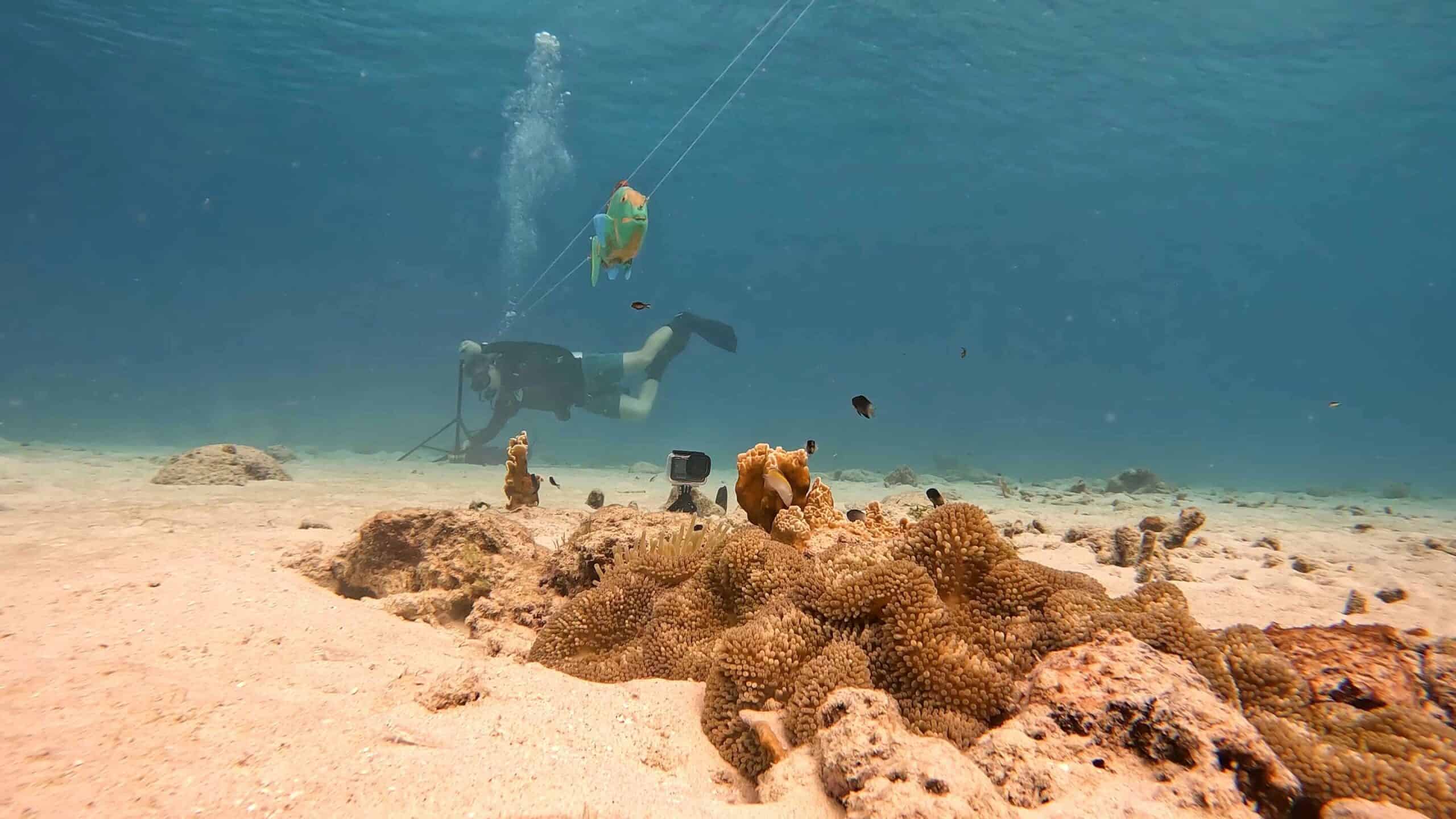Many hunters are sneaky, but this one takes it to a different level. The trumpetfish can hide itself by swimming behind other bigger fish while hunting. This reduces the likelihood of being detected by its prey and makes its hunts more successful. In fact, this is the only known example of an animal using another as a form of disguise. Researchers say the findings could provide valuable insight into how fish adapt to climate change.

It wasn’t your usual study — the researchers had to get very creative. The study involved spending hours diving in the Caribbean Sea and pulling hand-painted model fish along a wire. With this, researchers were able to show that the trumpetfish engages In a behavior known as shadowing. The trumpetfish (Aulostomus maculatus) uses other non-threatening species, such as parrotfish (of the family Scaridae), as camouflage to get closer to its prey.
“When a trumpetfish swims closely alongside another species of fish, it’s either hidden from its’ prey entirely, or seen but not recognized as a predator because the shape is different,” Sam Matchette, a researcher at the University of Cambridge’s Department of Zoology and the first author of the study, said in a news release.
A surprising behavior
Damselfish (Stegastes partitus) establish colonies on the seafloor and serve as a food source for trumpetfish. Working amidst the coral reefs encircling the island of Curaçao, the researchers arranged an underwater system designed to maneuver 3D-printed replicas of trumpetfish on nylon cords through colonies of damselfish — recording their reaction.
As the replica of the trumpetfish approached alone, the damselfish swam up to inspect but fled back to shelter from the threat. In contrast, when a model of a herbivorous parrotfish moved past alone, the damselfish had a milder reaction. When the trumpetfish model was attached to the side of the parrotfish the damselfish didn’t detect the threat.
The researchers spent hours underwater, barely moving, to do their experiment with the fish. “Doing manipulative experiments in the wild like this allows us to test the ecological relevance of these behaviors,” Andy Radford in the University of Bristol’s School of Biological Sciences, and co-author of the study, said in a news release.
Simultaneously, they asked a group of divers working at dive shops in the Caribbean to complete a questionnaire. This revealed that trumpetfish commonly swim near parrotfish and other reef fish. But the reason for this hadn’t been tested. Divers were also more likely to see the shadowing behavior on degraded coral reefs.
Coral reefs are under threat around the world due to climate change, overfishing and pollution. They are experiencing an alarming rate of degradation, becoming less complex and less biodiverse. The researchers believe the trumpetfish strategy of hiding behind other moving fish could help animals adapt to the impacts of environmental change.
“The shadowing behavior of the trumpetfish appears a useful strategy to improve its hunting success. We might see this behavior becoming more common in the future as fewer structures on the reef are available for them to hide behind,” James Herbert-Read in the University of Cambridge’s Department of Zoology, study author, said in a news release.
The study was published in the journal Current Biology.






